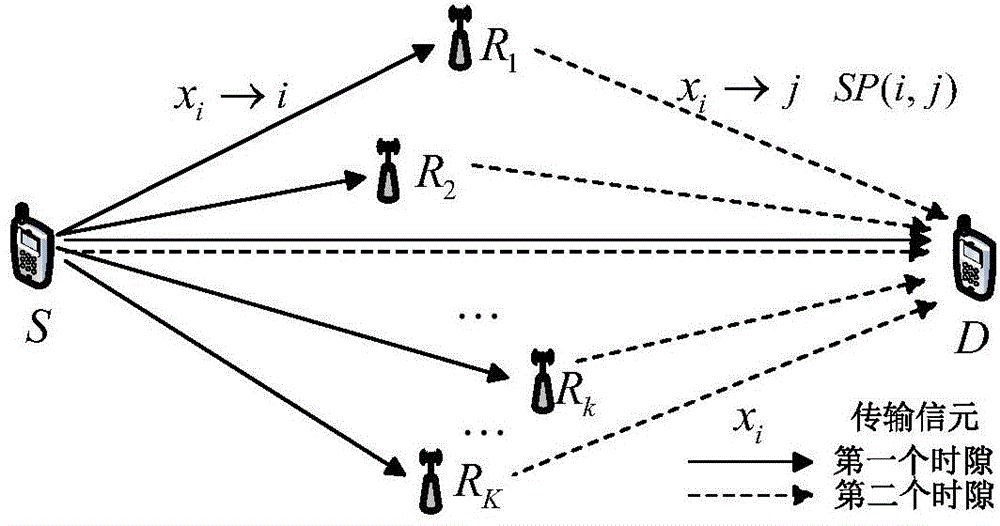Method for optimizing energy efficiency in OFDM multi-relay network
A technology of energy efficiency and optimization method, which is applied in the direction of multi-frequency code system, multiple use of transmission path, separation device of transmission path, etc., can solve problems such as high computational complexity and insufficient resource utilization
- Summary
- Abstract
- Description
- Claims
- Application Information
AI Technical Summary
Problems solved by technology
Method used
Image
Examples
Embodiment Construction
[0032] The present invention will be further described below in conjunction with embodiment and accompanying drawing:
[0033] 1. Multi-relay OFDM network system model
[0034] In the present invention, a two-hop OFDM-based multi-relay network is considered. The relay network consists of a source node S, a destination node D, and a relay node set {R consisting of K relays 1 , R 2 ,...,R K}constitute. We assume that the transmission bandwidth allocated to the source node S is equally divided into N subcarriers, and each channel occupies the same bandwidth and experiences independent frequency-selective Rayleigh fading. We assume that each relay node knows its forward and backward instantaneous channel information, and all channel instantaneous information is known at source node S and destination node D. The communication mode adopts half-duplex mode, and the whole communication process is divided into two time slots. In the first time slot, the source node S broadcasts the ...
PUM
 Login to View More
Login to View More Abstract
Description
Claims
Application Information
 Login to View More
Login to View More - R&D
- Intellectual Property
- Life Sciences
- Materials
- Tech Scout
- Unparalleled Data Quality
- Higher Quality Content
- 60% Fewer Hallucinations
Browse by: Latest US Patents, China's latest patents, Technical Efficacy Thesaurus, Application Domain, Technology Topic, Popular Technical Reports.
© 2025 PatSnap. All rights reserved.Legal|Privacy policy|Modern Slavery Act Transparency Statement|Sitemap|About US| Contact US: help@patsnap.com



